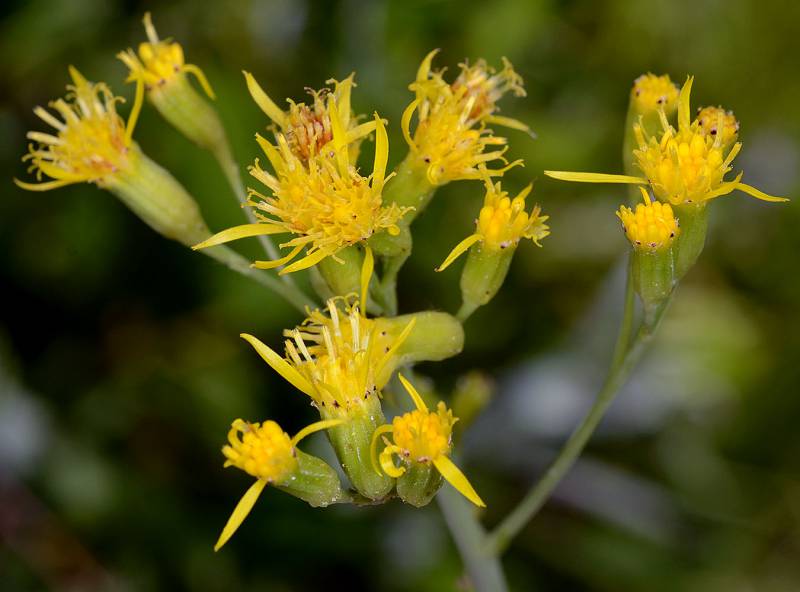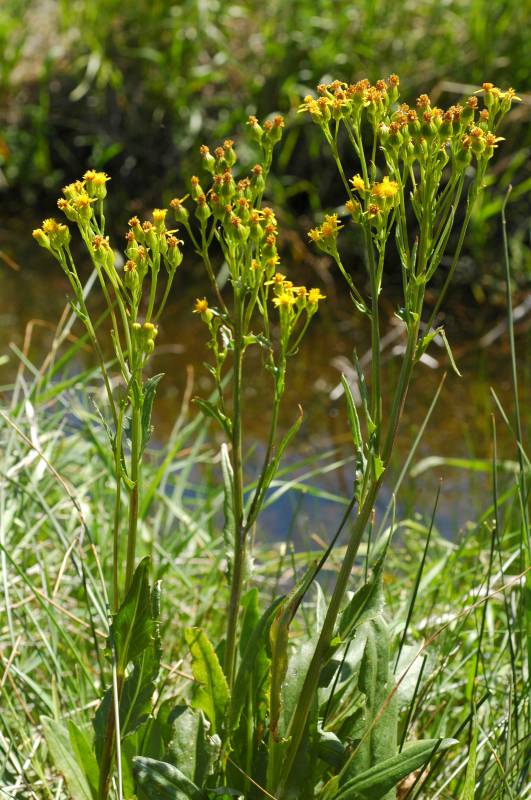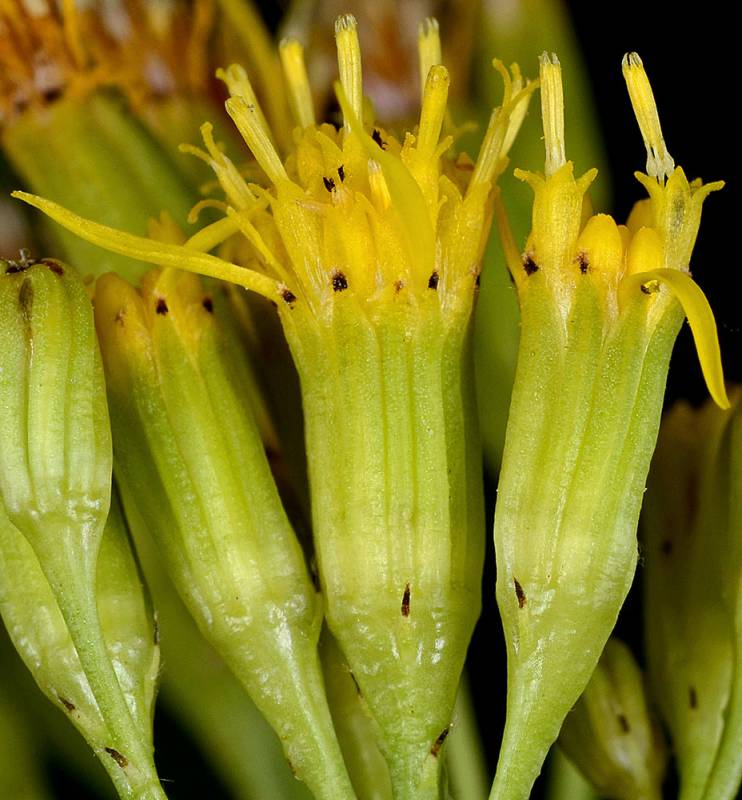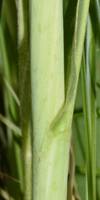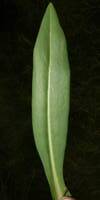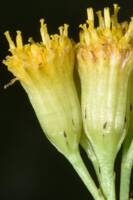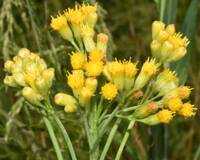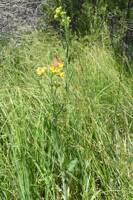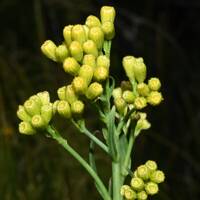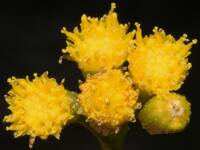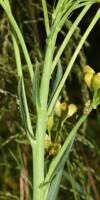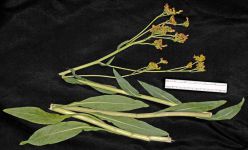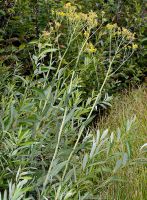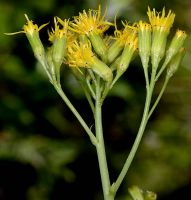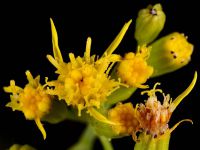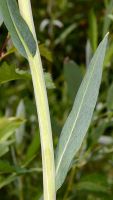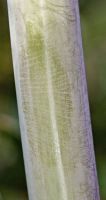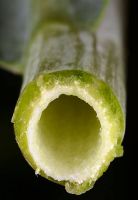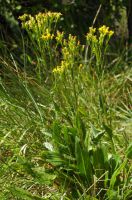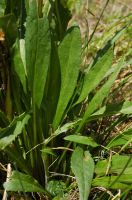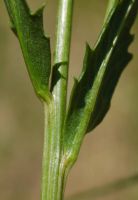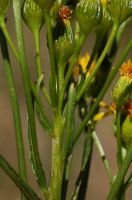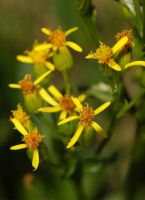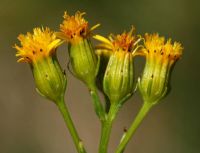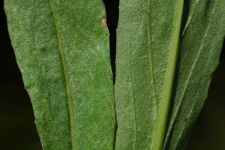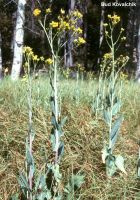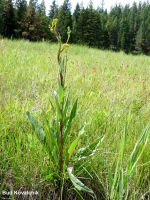Distribution: Occurring east of the Cascades crest in Washington; British Columbia to California, east to the Rocky Mountains and northern Great Plains.
Habitat: Swampy places in the valleys and foothills; tolerant of alkali.
Flowers: June- September
Origin: Native
Growth Duration: Biennial, Perennial
Conservation Status: Not of concern
Pollination: Bumblebees, bees, butterflies, flies, beetles
Robust, more or less glaucous, glabrous, fibrous-rooted perennial, 4-20 dm. tall, the stems usually clustered.
Thick and firm, usually entire but occasionally toothed, the basal and lower cauline ones long-petiolate, the blade narrowly elliptic, 10-20 cm. long and 2-5 cm. wide; middle and upper leaves few, strongly reduced, becoming sessile on the upper stem.
Heads usually numerous and crowded; involucre 5-8 mm high, narrow, its bracts usually black-tipped; rays few, 4-8 mm. long, or wanting.
Publication: Trans. Amer. Philos. Soc., n. s. 7: 411. 1841.
PNW Herbaria: Specimen records of Senecio hydrophilus in the Consortium of Pacific Northwest Herbaria database
WA Flora Checklist: Senecio hydrophilus checklist entry
OregonFlora: Senecio hydrophilus information
E-Flora BC: Senecio hydrophilus atlas page
CalPhotos: Senecio hydrophilus photos

